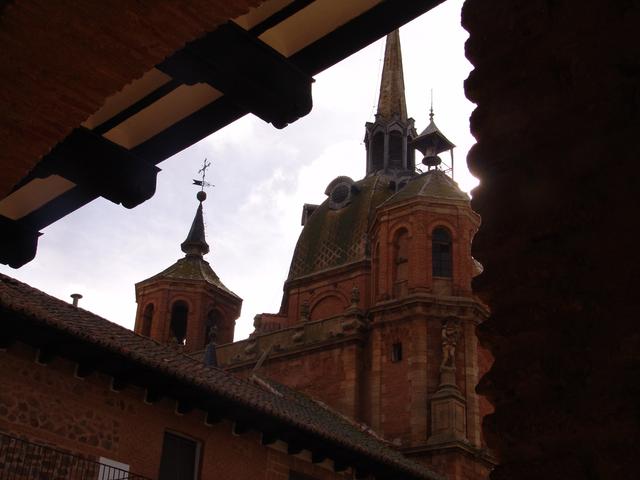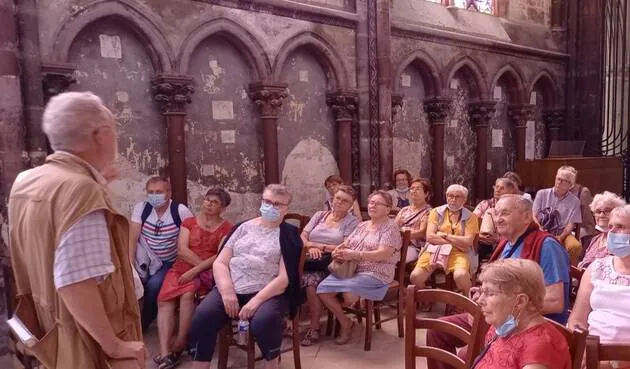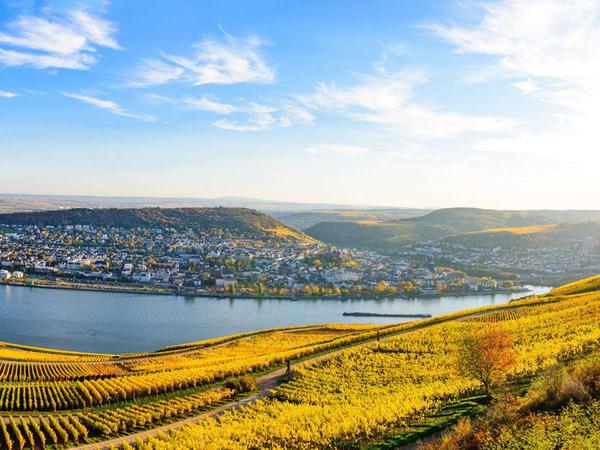Juan Alejandro Núñez de la Barrera Los + Newsletter
My 2022 calendar begins in past centuries.The constructions of the Province of Ciudad Real in the 18th century have as its main author the Núñez de la Barrera.The father, Miguel Núñez was a master of works of the Membrilla Council and his two children Tomás and Juan Alejandro learned the trade of their father and practice in different works in the province.
Both brothers had to learn the trade at work of work that gives them a good technical training, but it will be Juan Alejandro who stands out, since he receives the main orders;His resort and his cultural background will eclipse the figure of Tomás that will pass to the background, although it is presumable, since they worked a long time, which Tomás intervened in the documented works of Juan Alejandro.Juan Alejandro Núñez de la Barrera is presented to us, knowing the projected works, as a cultured man and a great connoisseur of Baroque architectural language, who perfectly managed the treaty of the low Renaissance and the properly baroque, fundamentally that of Fray Lorenzo de San Nicolás, which masterfully interprets in the construction of the leading domes.
The architecture treaties of the time
Fray Lorenzo de San Nicolás (1595-1679) Agustino Barez.The first part was published in 1633 that was completed with a second part in 1655 in response to the controversy raised by the architect Pedro de la Peña.
It is a general architecture treaty, practical and aimed primarily to the apprentices of the trade, with a clear didactic purpose, which is manifested in the simplicity of the explanations and the numerous immediate application tips.Apart from theoretical speculation, so frequent in the treaty of the 16th century, it intends to guide the undistinguished builder, and dedicates a good part of its contents to calculation issues.For numerous scholars it is one of the best written architecture treaties ever.A will to collect the knowledge of the moment and make them accessible to all.The treaties of different eras have been manuals of references for designers and builders who learned the details of the execution of the works in them.
The works of Alejandro Núñez de la Barrera
The work of Juan Alejandro Núñez de la Barrera is, in general, a work of great simplicity in the use of materials that adapts to the possibilities of the constructive elements of the area with the brick that uses peculiarly as in the tower of the towerConvent of the Assumption of Almagro or in the San Carlos del Valle building itself where the brick with stone elements singularly combines.The Tower of the Assumption Convent has a composition of great interest with stone basement and upper brick bodies in which the proportions and presence of the holes have excellent and balanced proportions.The contrast of the lower blind body with the elaborate and perforated area with two holes in the upper front bodies and one on the sides, which pass over the church cover give a singular appearance to the tower.A tower that will have serious stability problems in later centuries and that will restore Miguel Fisac..

Alejandro Núñez de la Barrera also intervenes in the Church of the Society of Jesus, in Almagro.A complex building composed of the Church and College started in 1625 and that Alejandro completes in essential parts of the same.It also projects and executes the Tower of the Parish Church of La Solana in 1745 when the first two bodies are completed in 1746 the works master Miguel Mentanza.It probably also intervened in the last body of the tower of the parish church of the Assumption of Valdepeñas and by the characteristics of the building the Almagro prison can be attributed, as well as the Royal Cavalry Barracks built in 1758 in the adjoining lot of adjoining withThe master palaces.The works teacher Juan Ruiz de Lis intervened in the tower of the Church of Torre de Juan Abad, but the rest of the important works of this period are carried out by Juan Alejandro.
His composition exercises in the different buildings of buildings in which he intervenes are a lesson of harmony and balance.Solutions that seek the verticality of what is built with a reading of successive planes that in the ascending form of the set are marking sequences towards the highest area.And compositions that seek balance and harmonious relationship between different parts and the entire projected building.Elements that, in addition, are integrated into the set built by establishing an accent point that dialogues and is related to the existing.
The domes
The dome of the Church of the Company of Jesus of Almagro or San Bartolomé responds to the constructive novelty introduced by the Jesuit Francisco BautistTraditional stone are replaced by a wooden armor coated with bricks and plaster and subsequently decorated by plaster ornaments.This system managed to considerably reduce the weight that the dome exerted on the ship and chealed the construction costs and therefore had a great diffusion the use of these domoned domes.The Treaty of Fray Lorenzo de San Nicolás, art and use of architecture developed the technical details of its construction with illustrative engravings that explained the process.Alejandro Núñez de la Barrera has learned the technique and knows how to integrate it with adequate proportions and an understanding of the church as a whole.The facade of the Jesuits is also a lesson of composition of a set.
San Carlos del Valle
Juan Alejandro's most important project is the whole of San Carlos del Valle, composed of Church, Plaza and Mesón around 1713-1729.Although the initial objective was to respond to popular demands of devotion to the Holy Christ, the ultimate goal was the construction of a great set that was emblem not only the place, but also the one in charge, the crown.Therefore a cult language is used, combined with popular nuances.And it is precisely the combination of these ingredients properly that gives San Carlos del Valle its originality.And next to that originality the mastery of the designer is evident in the work carried out.
A building that has been barely valued by scholars of different moments and that is, however, one of the jewels of religious architecture of the province of Ciudad Real, for its conception, by the originality of constructive solutions and for meaningof this in the configuration of a small illustrated city.
Alejandro Núñez de la Barrera is undoubted.


